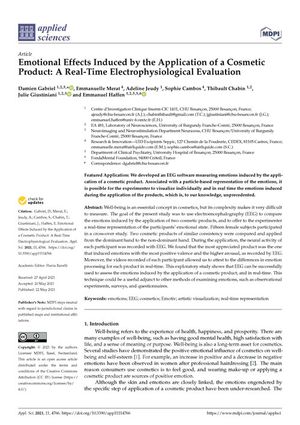SGS proderm is currently expanding its range of services for investigating the well-being effects of cosmetics with a new method. Electroencephalograms (EEG) are used to investigate the extent to which the use of a cosmetic product has an effect on brain activity and how pronounced this change is. We took this opportunity to talk to Stephan Bielfeldt, Vice President and Director Scientific Consulting, about neurocosmetics and the new methodological approach.
- Category
- Consumer Care, SGS proderm
- Date
- Share
How is well-being defined in the cosmetic sense?
There is no generally valid definition. But of course it is about feeling good, being relaxed and in a good mood. In general, it is about positively changing emotions through the application of a cosmetic product. We can analyse these feelings in real time with the EEG.
How lasting does an emotional effect have to be in order to derive a well-being effect or claim from it?
Again, there is no definition. Well-being is not a scientifically defined term and can therefore be freely defined as desired. Certain is though that feelings are generally very variable, and of course this also applies to the states of well-being and unwellness. But if a product spontaneously conveys a positive feeling, even if it does not last long, that is already a success.
Are emotional effects always connected to personal well-being?
Emotions are bodily states, from joy or enthusiasm to fear and anger in all gradations and qualities. Personal well-being is given when there is homeostasis. The organism (body-mind) is physiologically in the green zone, i.e. is without hunger, thirst, pain, fear or pronounced worry. Personal well-being is a feeling and therefore also a state of the body, which is why it can also be measured physiologically, e.g. via stress hormones, pulse, blood pressure and also brain waves (EEG).
How does the new method work?
It has been scientifically proven that cosmetic products can trigger positive feelings. This change in emotions shows up as a measurable change in brain waves. With a specially developed EEG software, the emotions triggered by a cosmetic product can be recorded and analysed directly during the application of the product.
What makes the EEG approach so attractive?
The development of products with high-quality neurocosmetic claims must necessarily take into account the use of objective measurement methods in the context of claim support. The EEG approach is such a procedure. For me personally, the visual presentation of the results also seems particularly attractive, as it makes the effect of the product immediately recognisable for everyone in principle.
How does a study with this procedure work?
There are different scenarios for the use of the procedure. On the one hand, we can use it to determine a suitable formulation in a screening study, for example. On the other hand, we can also compare two products in a cross-over design. The following applies to both designs: the measurement must take place in a low-stimulus environment so that the emotions of the study participants are not influenced by external factors.
Mr. Bielfeldt, thank you very much for the interview!



![[Übersetzen nach: Englisch] Measurement of well being effects](/fileadmin/_processed_/7/7/csm_eeg_well_being_2a916b7ce6.jpg)


